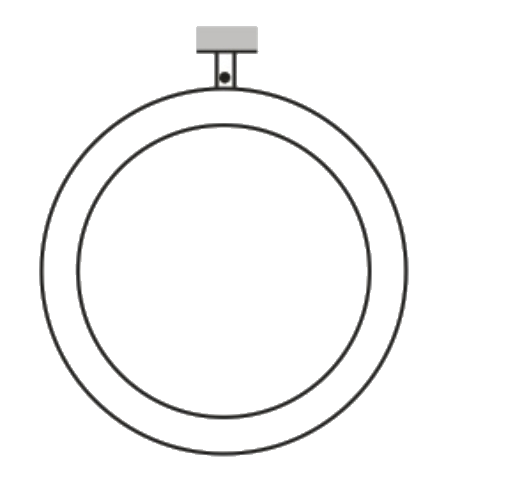(A) : The soldiers marching on a suspended bridge are advised to go out of steps.
(R): Frequency of marching steps may match with the natural frequency of oscillation of bridge.
Both 'A' and 'R' are true and R' is the correct explanation of 'A'
Both 'A' and 'R' are true and 'R' is not the correct explanation of 'A'
A' is true and 'R' is false
A' is false and 'R' is true
The correct Answer is:A
Topper's Solved these Questions
- OSCILLATIONSBook:AAKASH SERIESChapter:OSCILLATIONSExercise:EXERCISE -II Equations of SHM
Explore 38 Videos
- OSCILLATIONSBook:AAKASH SERIESChapter:OSCILLATIONSExercise:EXERCISE -II Simple pendulum
Explore 23 Videos
- OSCILLATIONSBook:AAKASH SERIESChapter:OSCILLATIONSExercise:EXERCISE -I Matching type questions
Explore 5 Videos
- OSCILLATIONBook:AAKASH SERIESChapter:OSCILLATIONExercise:QUESTIONS FOR DESCRIPTIVE ANSWERS
Explore 12 Videos
- PHYSICAL WORLDBook:AAKASH SERIESChapter:PHYSICAL WORLDExercise:VERY SHORT ANSWER TYPE QUESTIONS
Explore 5 Videos
Similar Questions
Assertion : The soldiers marching on a suspended bridges are advised to go of steps
Reason : frequency of marching step may match we the nature frequency of oscillation of bridge
View SolutionAssertion: soldiers are asked to break steps while crossing the bridge.
Reason: The frequency of marching may be equal to the natural frequency of bridge and may lead to resonance which can break the bridge.
View Solution
Knowledge Check
Assertion : The soldiers marching on a suspended brids are advised to go of stape
Reason : frequency of marching step may match we the nature frequency of oscillation of bridgeAIf both assertion and reason are true and the reasopn is correct explanation of the assertionBIf both assertion and reason are true and but not the correct explanation of assertionCIf assertion is true but the reason is falseDIf both assertion and reason are falseAssertion: soldiers are asked to break steps while crossing the bridge.
Reason: The frequency of marching may be equal to the natural frequency of bridge and may lead to resonance which can break the bridge.Aif both the assertion and reason are true and reson is a true explanation of the assertion.Bif both the assertion and reason are true but the reason is not the correct explanation of assertion.CIf the assertion is true but reason is false.DIf both the assertion and reason are false.A: When soldier cross a bridge, they are asked to break steps.
R: If they do not break steps, then they will apply large force on bridge simutaneously.AIf both Assertion & Reason are true and the reason is the correct explanation of the assertion, then mark (1)BIf both Assertion & Reason are true but the reason is not the correct explanation of the assertion, then mark (2)CIf Assertion is true statement but Reason is false then mark (3)DIf both Assertion and Reason are false statements, then mark (4)
When a troop crosses a suspension bridge, the soldiers are asked to break steps.
View SolutionA: When soldier cross a bridge, they are asked to break steps.
R: If they do not break steps, then they will apply large force on bridge simutaneously.
View SolutionA ring of the radius r is suspended from a point on its circumference. If the ring is made to oscillate in the plane of the figure, then the angular frequency of these small oscillations is

View SolutionA ring of the radius r is suspended from a point on its circumference. If the ring is made to oscillate in the plane of the figure, then the angular frequency of these small oscillations is

View SolutionA body of mass 12 kg is suspended by a coil spring of natural length 50 cm and force constant 2.0×10Nm−1. What is the stretched length of the spring ? If the body is pulled down further stretching the spring to a length of 59 cm and then released, what is the frequency of oscillation of the suspended mass ? (Neglect the mass of the spring).
View Solution
